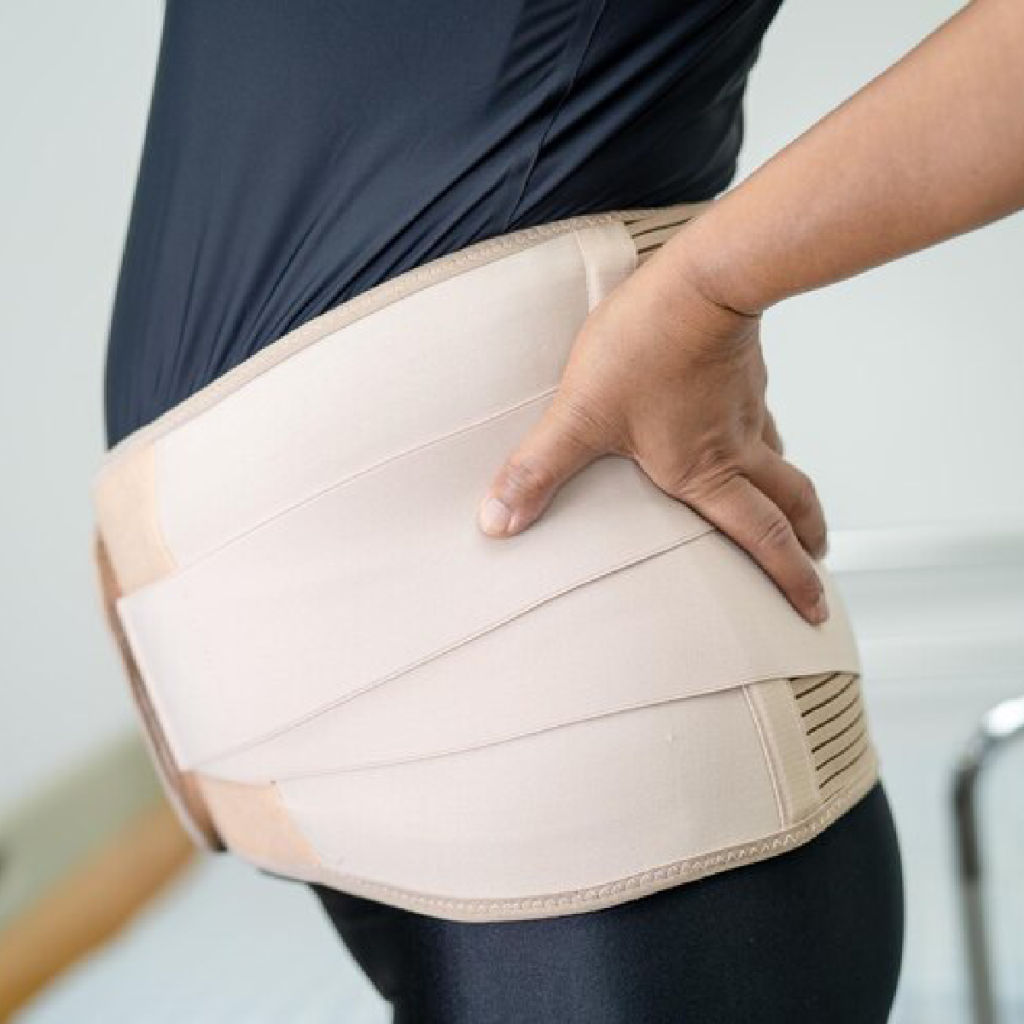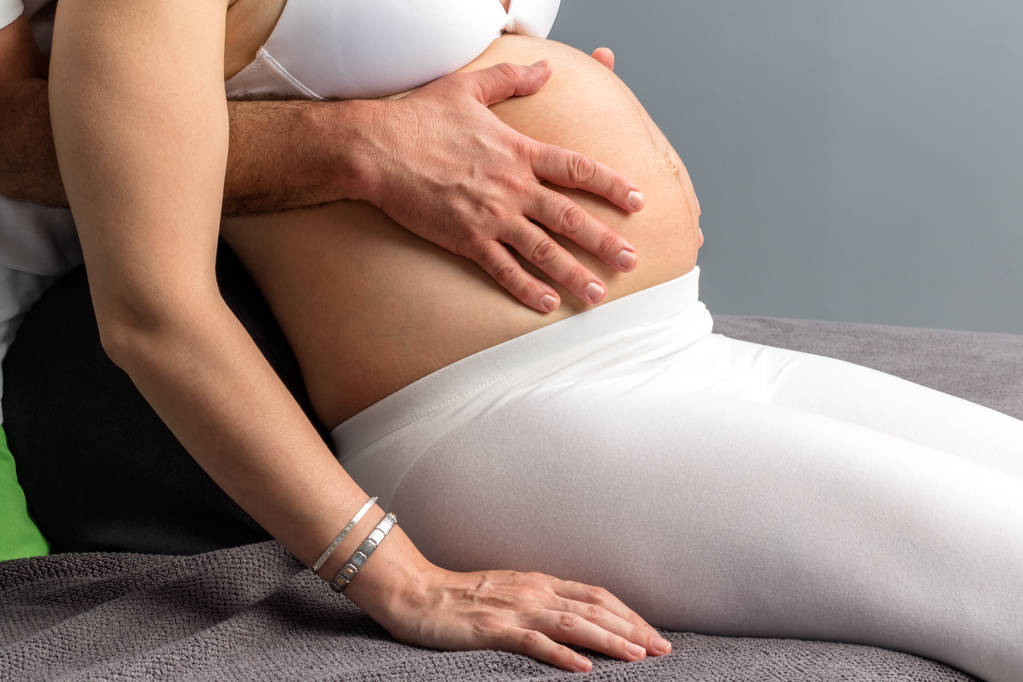Discover the benefits of using maternity belts for back support postpartum.
Are Maternity Belts Useful Postpartum for Back Support?
If you’re a new mom, you know that the journey to motherhood is an incredible experience but it can also take a toll on your body. The physical changes that occur during pregnancy and childbirth often leave women with various discomforts and challenges, including back pain. That’s where maternity belts come into play – a handy accessory that can provide much-needed support and relief. In this article, we’ll explore the purpose of maternity belts, their benefits, potential drawbacks, and alternative options for back support postpartum.

Understanding the Purpose of Maternity Belts
So, what exactly is the purpose of a maternity belt? Simply put, it’s designed to support your lower back and abdominal muscles, offering relief from pain and discomfort. Maternity belts are typically made from soft, stretchy materials that provide a snug fit around your belly, helping to distribute the weight of your growing baby more evenly. This can reduce the strain on your back, promoting better posture and alleviating pressure on your spine.
During pregnancy, your body goes through numerous changes, both internally and externally. As your baby develops and your belly expands, the ligaments and muscles in your lower back and abdomen can become strained. This can lead to discomfort, especially when standing or walking for extended periods. Maternity belts provide much-needed support to these areas, helping to alleviate the pressure and reduce the risk of developing backaches and other related issues.
The Design and Function of Maternity Belts
Maternity belts are constructed with careful consideration for both functionality and comfort. They often feature adjustable straps or Velcro closures, allowing you to customize the fit according to your body shape and size. This ensures that the belt provides optimal support and stays securely in place throughout the day.
In addition to the adjustable straps, some maternity belts also include additional support panels or inserts in key areas to provide targeted relief where you need it most. These panels are strategically placed to support your lower back, abdomen, and hips, offering enhanced stability and reducing the strain on these areas.
Furthermore, maternity belts are designed to be discreet and easily concealable under clothing. The soft and stretchy materials used in their construction ensure a comfortable fit without causing any irritation to your skin. This allows you to wear the belt throughout the day, even when you’re out and about, without drawing attention to it.
The Role of Maternity Belts During Pregnancy
It’s important to note that maternity belts are not just for the postpartum period – they can also be incredibly useful during pregnancy. As your baby bump grows, your center of gravity shifts, leading to increased strain on your back muscles. Maternity belts provide stability and support, helping to reduce the probability of backaches and discomfort. They can be particularly beneficial during physical activities or when you need to spend extended periods on your feet.
Moreover, maternity belts can also aid in improving your posture. As your belly expands, it can cause your lower back to curve excessively, leading to poor posture. Wearing a maternity belt helps to counteract this by providing gentle compression and support to your abdomen and lower back, encouraging you to maintain a more upright and aligned posture.
Additionally, maternity belts can have a positive impact on your overall well-being during pregnancy. By reducing the strain on your back and abdomen, they can help you feel more comfortable and mobile. This, in turn, can improve your mood and energy levels, allowing you to better enjoy this special time in your life.
In conclusion, maternity belts play a crucial role in providing support, stability, and relief during pregnancy. Their thoughtful design, functionality, and comfort make them an essential accessory for expectant mothers, helping them navigate the physical challenges of pregnancy with greater ease and comfort.
Postpartum Period and Back Support
Once you’ve welcomed your little bundle of joy into the world, your body goes through a series of changes as it adjusts to postpartum life. During this period, you may find yourself experiencing back pain due to the physical stress placed on your body during pregnancy and childbirth.
The Impact of Pregnancy on the Back
Pregnancy takes a toll on your back – there’s no denying it. As your uterus expands to accommodate your growing baby, the increased weight can cause your back muscles to work harder than usual. The hormonal changes that occur during pregnancy can also loosen your ligaments, adding to the strain on your spine and leading to discomfort.
But let’s delve deeper into the impact of pregnancy on your back. As your baby grows, your center of gravity shifts forward, causing an increased curvature in your lower back. This change in posture can put additional pressure on the discs in your spine, leading to pain and discomfort. Furthermore, the hormone relaxin, which is released during pregnancy, softens the ligaments in your body, including those in your back. While this is necessary for childbirth, it can also make your back more vulnerable to injury and strain.
Additionally, the physical changes that occur in your abdominal muscles during pregnancy can contribute to back pain. As your belly expands, your abdominal muscles stretch and weaken. This lack of core strength can lead to poor posture and increased stress on your back muscles, exacerbating any existing discomfort.
The Importance of Back Support Postpartum
When it comes to postpartum recovery, taking care of your back is crucial. Your body needs time to heal and rebuild strength after childbirth. By providing support to your lower back and core muscles, maternity belts can play a significant role in your recovery process. They can help alleviate pain, promote proper alignment, and even assist in tightening your abdominal muscles.
But how exactly do maternity belts provide back support? These belts are designed to wrap around your lower back and abdomen, providing gentle compression and stability. The compression helps to reduce strain on your back muscles, providing relief from pain and discomfort. Additionally, the support provided by maternity belts helps to promote proper posture, which is essential for maintaining a healthy back.
Moreover, maternity belts can also aid in the recovery of your abdominal muscles. After childbirth, your abdominal muscles may be weakened and stretched. Wearing a maternity belt can help bring these muscles back together, promoting healing and strengthening. By providing support to your core, maternity belts can assist in regaining abdominal strength and tone.
It’s important to note that while maternity belts can be beneficial, they should be used in conjunction with other postpartum recovery strategies, such as gentle exercises and stretches. Consulting with a healthcare professional is also recommended to ensure that you are using the belt correctly and that it is suitable for your specific needs.
The Benefits of Using Maternity Belts Postpartum
So, what are the specific benefits of using maternity belts during the postpartum period? Let’s explore two key advantages:
Providing Lumbar Support
One major benefit of maternity belts is the provision of lumbar support. By stabilizing your lower back and relieving pressure on your spine, these belts can help reduce pain and discomfort. They promote proper posture, which is especially important when you’re constantly lifting, bending, and carrying your little one.
During the postpartum period, your body goes through various changes as it adjusts to its pre-pregnancy state. Your lower back, in particular, can experience strain due to the weight of your growing baby and the hormonal changes that loosen ligaments and joints. Maternity belts provide a secure and supportive wrap around your lower back, offering stability and alleviating the stress on your spine.
Not only do maternity belts provide physical support, but they also offer psychological reassurance. Knowing that your lower back is protected and supported can give you peace of mind, allowing you to focus on caring for your newborn without the distraction of discomfort.
Assisting in Abdominal Muscle Recovery
Another advantage of using maternity belts postpartum is their potential to aid in abdominal muscle recovery. Pregnancy stretches and weakens the abdominal muscles, and it takes time for them to regain their strength. Wearing a maternity belt can provide gentle compression and support to the abdominal area, helping to improve muscle tone and accelerate the recovery process.
During pregnancy, your abdominal muscles naturally stretch to accommodate your growing baby. After giving birth, these muscles need time to heal and regain their former strength. Maternity belts offer a gentle compression that helps bring the abdominal muscles back together, promoting faster recovery and preventing the development of diastasis recti, a condition where the abdominal muscles separate.
Additionally, maternity belts can provide support to the pelvic floor muscles, which also undergo significant strain during pregnancy and childbirth. By offering gentle compression and stability, these belts can assist in the recovery of the pelvic floor muscles, helping to prevent issues such as urinary incontinence.
It’s important to note that while maternity belts can be beneficial, they should be used in consultation with your healthcare provider. They are not a substitute for proper postpartum care, including exercises and rest. Your healthcare provider can guide you on the appropriate use of maternity belts and recommend exercises and other measures to support your postpartum recovery.
Potential Drawbacks of Maternity Belts Postpartum
While maternity belts offer numerous benefits, it’s important to be aware of potential drawbacks. Here are a couple of considerations:
Possible Discomfort and Skin Irritation
Some women may find that wearing a maternity belt for an extended period can cause discomfort or skin irritation. This can be due to factors such as heat buildup, friction, or sensitivity to certain materials. It’s essential to choose a well-fitting and breathable belt to minimize these issues.
Dependency and Muscle Weakening Concerns
Another concern is the potential dependency on maternity belts leading to weakened muscles over time. While belts can provide much-needed support, it’s essential to incorporate other exercises and activities that promote natural muscle strength. Relying solely on a maternity belt may prevent your muscles from naturally rebuilding their strength and endurance.
Alternatives to Maternity Belts for Back Support
If you’re not keen on using a maternity belt or want to explore additional options for back support, there are alternative approaches you can consider:

Physical Therapy and Exercise
Working with a physical therapist who specializes in postpartum care can be immensely beneficial. They can guide you through exercises and stretches that target the areas affected by pregnancy and childbirth. These exercises can help strengthen your core muscles, improve posture, and reduce back pain.
Ergonomic Furniture and Supportive Clothing
Investing in ergonomic furniture, such as chairs with proper lumbar support and adjustable height desks, can greatly alleviate back pain. Additionally, wearing supportive clothing made from stretchy, supportive materials can provide gentle compression and help support your back muscles throughout the day.
In conclusion, maternity belts can be a valuable tool for back support during and after pregnancy. They offer benefits such as lumbar support and abdominal muscle recovery assistance. However, it’s important to be mindful of potential discomfort and over-reliance on belts. Exploring alternative options, such as physical therapy and ergonomic changes, can complement the use of maternity belts and promote overall well-being. Remember, every woman’s body is unique, so it’s essential to listen to your body and consult with your healthcare provider before using any support devices or implementing new exercises or routines. Take care of yourself, momma, and enjoy the beautiful journey of motherhood!



